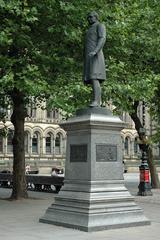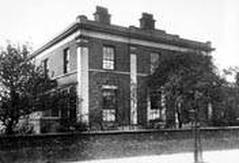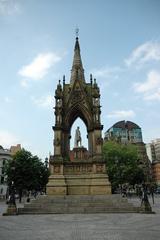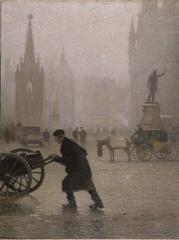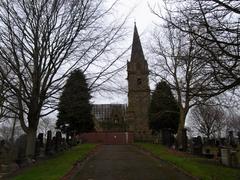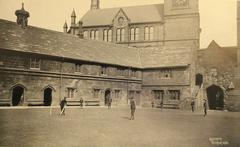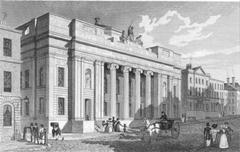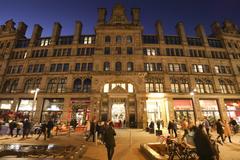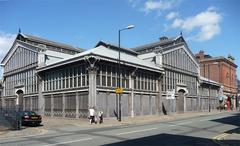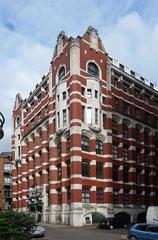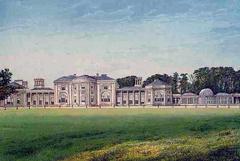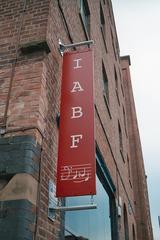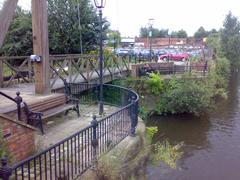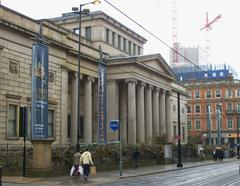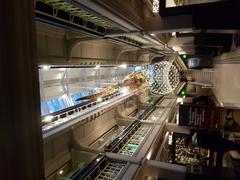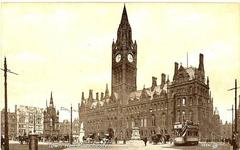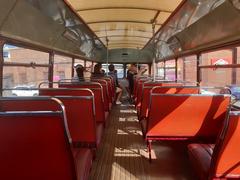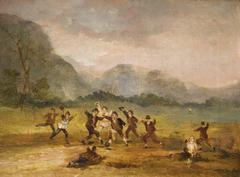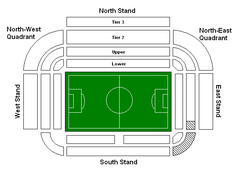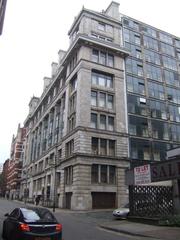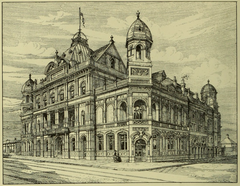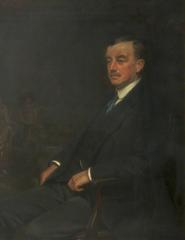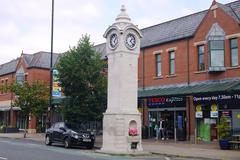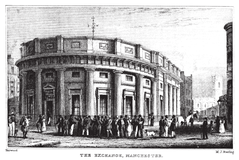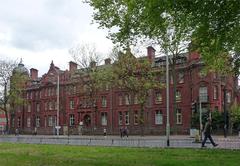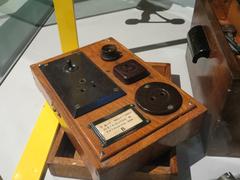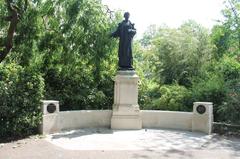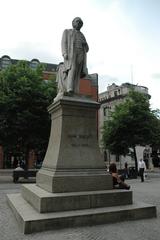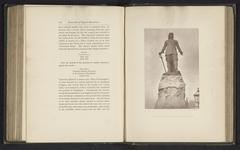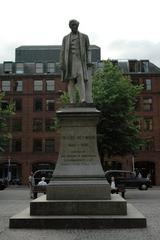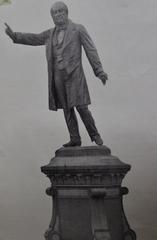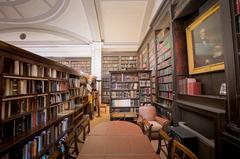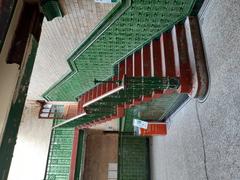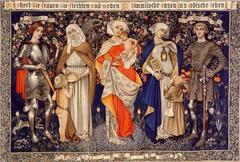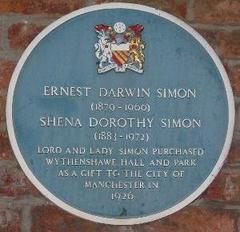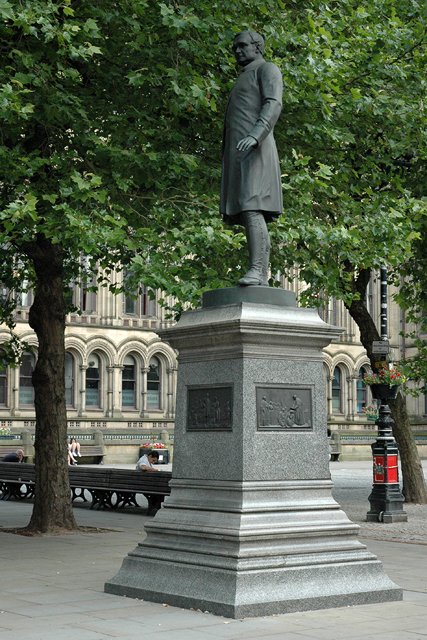
Statue of James Fraser, Manchester: Visiting Hours, Tickets, and Historical Significance
Date: 14/06/2025
The Statue of James Fraser in Manchester’s Albert Square stands as a lasting tribute to one of the city’s most influential religious leaders and social reformers of the Victorian era. Erected in 1888, this bronze monument honors Fraser’s enduring legacy as the second Bishop of Manchester, highlighting his commitment to education, workers’ rights, and social justice during a transformative period in the city’s history. For visitors interested in Manchester’s historical sites, Victorian public art, or civic heritage, the statue offers a compelling window into the city’s past and values (Visit Manchester, Manchester Pocket Guide, Wikipedia).
Table of Contents
- Introduction
- Early Life and Education of James Fraser
- Ecclesiastical Career and Social Reform
- Appointment as Bishop of Manchester
- Legacy and Impact on Manchester
- The Statue: Historical Context, Artistic Design, and Symbolism
- Visiting Information
- Frequently Asked Questions (FAQ)
- Historical Significance and Relevance Today
- Summary and Call to Action
- References and Further Reading
Introduction
The James Fraser statue is a must-see landmark for anyone interested in Manchester’s history, social reform movements, and Victorian heritage. Located in Albert Square, this monument encapsulates the spirit of civic engagement and progressive values that shaped modern Manchester. Whether you’re a local resident, a history enthusiast, or a tourist, the statue offers insight into the life and work of a figure who helped define the city’s identity.
Early Life and Education of James Fraser
James Fraser was born in 1818 in Prestbury, Gloucestershire, into a family deeply rooted in the Anglican tradition. He attended Shrewsbury School and excelled at Lincoln College, Oxford, earning a first-class degree in classics in 1840. Fraser’s early academic achievements and exposure to religious life shaped his progressive outlook and set the stage for a career marked by advocacy and reform (Wikipedia).
Ecclesiastical Career and Social Reform
Ordained in 1846, Fraser quickly established himself as a reform-minded clergyman. He served as a curate in Oxfordshire and later as rector in Wiltshire, gaining recognition for his advocacy of educational reform and his dedication to improving working-class conditions. Appointed as an inspector of schools in 1858, Fraser’s influential reports helped shape Victorian educational policy and expanded access to quality schooling for all social classes (The Bishop Fraser Trust).
Beyond education, Fraser was a vocal supporter of the cooperative movement and workers’ rights, often mediating in industrial disputes and championing the welfare of Manchester’s working class. His pragmatic, compassionate leadership style earned him widespread respect (St Chrysostom’s).
Appointment as Bishop of Manchester
In 1870, Fraser was appointed the second Bishop of Manchester, a city at the forefront of the Industrial Revolution. His tenure was marked by rapid church expansion—overseeing the consecration of 99 new churches, rebuilding 20, and creating 109 new parishes (Wikipedia). He established a Board of Education, promoted religious tolerance, and worked closely with leaders of other denominations, furthering both spiritual and social progress across Manchester. Fraser’s sermons frequently addressed pressing issues like housing, sanitation, and public health, reinforcing his belief in the Church’s role as a force for social good.
Legacy and Impact on Manchester
James Fraser’s legacy is visible throughout Manchester: in its schools, charitable organizations, and enduring culture of social reform. He championed accessible education, mediated labor disputes, and fostered a spirit of inclusivity and religious tolerance. Known as “the people’s bishop,” Fraser’s work laid the foundation for a more equitable and compassionate city. His influence endures in local educational trusts and memorials, including stained glass windows at St Chrysostom’s Church (The Bishop Fraser Trust, St Chrysostom’s).
The Statue: Historical Context, Artistic Design, and Symbolism
Historical Context
Commissioned by public subscription and unveiled in 1888, the statue stands in Albert Square, Manchester’s civic heart. Its location among other notable monuments emphasizes Fraser’s significance in the city’s history (Visit Manchester).
Artistic Design
Created by sculptor Thomas Woolner, the bronze statue portrays Fraser in episcopal robes, holding a Bible and crozier—symbols of his dual roles as spiritual leader and social advocate. The granite pedestal features three bronze panels, each depicting Fraser as bishop, citizen, and man of charity, reflecting his multifaceted contributions.
Symbolism
- Ecclesiastical Attire: The mitre and crozier signify Fraser’s authority and pastoral responsibilities.
- Posture and Expression: The upright stance and calm gaze invite reflection on Fraser’s legacy of wisdom and public service.
- Pedestal Panels: The bronze panels narrate Fraser’s impact in spiritual and civic life, emphasizing his compassion and leadership (Superlative Walks).
Visiting Information
Location and Accessibility
- Address: Albert Square, Manchester, M2 5DB, United Kingdom
- Transport:
- Train: Manchester Piccadilly and Victoria stations (10–15 min walk)
- Tram: St Peter’s Square and Exchange Square stops nearby
- Bus: Multiple routes serve the city centre
- On Foot: Easily accessible in the pedestrian-friendly city centre
Albert Square is fully wheelchair accessible with paved walkways and step-free paths.
Visiting Hours and Tickets
- Hours: 24/7, as Albert Square is an open public space
- Admission: Free, no tickets required
Best Times to Visit
- Photography: Early mornings and late afternoons offer ideal lighting.
- Seasonal Events: The square hosts events such as the Manchester International Festival and Christmas Markets, adding vibrancy and crowds.
Guided Tours and Special Events
Many walking tours include Albert Square and the Fraser statue, offering in-depth historical commentary. Check local operators or the official Manchester tourism website for schedules.
Practical Tips and Accessibility
- Facilities: Nearby cafés, restaurants, shops, and public restrooms.
- Safety: Keep personal belongings secure during busy events.
- Etiquette: Please do not climb or sit on the statue.
Nearby Attractions and Photographic Spots
- Manchester Town Hall: Victorian Gothic masterpiece (currently under restoration; exterior remains a highlight).
- Manchester Art Gallery: Free entry, renowned for Victorian and Pre-Raphaelite art.
- St Peter’s Square: Central Library, Cenotaph, and “Adrift” statue.
- John Rylands Library: Architectural gem with rare manuscripts.
- Manchester Cathedral: Medieval site hosting services and events.
- Other Statues: Albert Memorial, William Gladstone, Queen Victoria, Abraham Lincoln.
Frequently Asked Questions (FAQ)
Q: What are the visiting hours for the James Fraser statue?
A: The statue is in Albert Square, accessible 24/7, free of charge.
Q: Is there an entry fee or ticket required?
A: No, there is no charge or ticket required.
Q: Is the site wheelchair accessible?
A: Yes, the area is step-free with paved paths.
Q: Are guided tours available?
A: Yes, several Manchester walking tours include the statue.
Q: What are the best times for photography?
A: Early morning and late afternoon for best natural lighting.
Historical Significance and Relevance Today
The Statue of James Fraser is not just a memorial to a Victorian bishop but a symbol of Manchester’s tradition of progress, inclusivity, and civic pride. Fraser’s leadership in expanding education, promoting religious tolerance, and mediating industrial disputes shaped the city’s ethos. Today, the statue serves as a reminder of the power of individual action in fostering social reform. The surrounding interpretive signage and digital resources, including QR codes linking to virtual tours, enhance the educational value of the site (Manchester Pocket Guide, Visit Manchester).
Summary and Call to Action
Visiting the Statue of James Fraser in Manchester’s Albert Square is an enriching experience, offering a unique perspective on the city’s historical journey and ongoing commitment to education, social justice, and community spirit. With free access, excellent transport links, and proximity to major attractions, the statue is a practical and rewarding destination for all. Enhance your visit with guided tours, digital resources, and exploration of surrounding landmarks.
For more information, download the Audiala app, follow official Manchester tourism channels, and stay updated on upcoming cultural events. Share your photos and experiences to celebrate Manchester’s enduring heritage.
References and Further Reading
- Visit Manchester – Statues of Manchester
- Manchester Evening News – Guide to City Centre Statues
- I Love Manchester – Greater Manchester Sculptures & Statues
- Manchester Pocket Guide – Hidden Gems Manchester
- St Chrysostom’s – Bishop James Fraser
- The Bishop Fraser Trust – Vision & Values
- Wikipedia – James Fraser (bishop)
